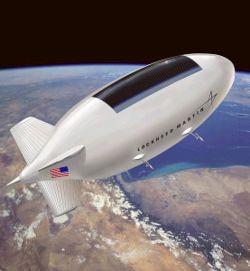Difference between revisions of "Automated transport systems"
| Line 9: | Line 9: | ||
Non-human transport systems and pipelines. Materials / cargo / delivery. | Non-human transport systems and pipelines. Materials / cargo / delivery. | ||
| + | |||
| + | {{frame1|Solar-powered airships}} | ||
[[Talk:Automated transport systems|>> Notes]] | [[Talk:Automated transport systems|>> Notes]] | ||
Revision as of 01:32, 23 April 2010
| << Page in early stages >> |
|---|
 Main Page > Advanced automation > Automated infrastructure > Automated transport systems
Main Page > Advanced automation > Automated infrastructure > Automated transport systems
For the automation of national, or global, infrastructure there obviously needs to be automated transportation. To take ore from the mines to material processing plants, to take processed materials to manufacturing plants and to take goods and products to their destinations, not to mention the supply of components and machinery to other automated facilites.
Then there is the issue of transporting people. Cars currently are very inefficient in terms of energy per passenger and they are also extremely dangerous. Due to the everyday nature we sweep under the carpet quite how risky driving really is. The annual global death toll in road accidents is an amazing 1.2 million people per year and 15 million serious injuries (source: [1] & [2]). This is the equivalent of Auckland, the most populous city in New Zealand, being nuked each year in terms of death, and every man woman and child in New York and Hong Kong being severely injured every single year.
Trains are one of the most efficient forms of transport in terms of energy per unit weight moved. They are also the easiest to automate, with some already being so, such as the Docklands Light Railway  in London.
in London.
Non-human transport systems and pipelines. Materials / cargo / delivery.
One promising technology for moving freight around the world would be to create lighter-than-air, solar-powered, high-altitude, high-speed airships. At least one design for such a craft has already been worked out.
The craft is filled with helium, making it lighter than air and allowing it to rise into the sky without using energy. It is designed to fly at a height of nearly 11000m. At this altitude, air is thinner, so less air-resistance is offered to the unaerodynamic bulbous airship moving through the sky. The large top of the airship is covered with solar panels and because it flies above all cloud-cover and above 11km of air that blocks the sun's energy, it is able to access abundant solar energy, regardless of the weather. It can fly day and night at speeds of about 200km/h.
